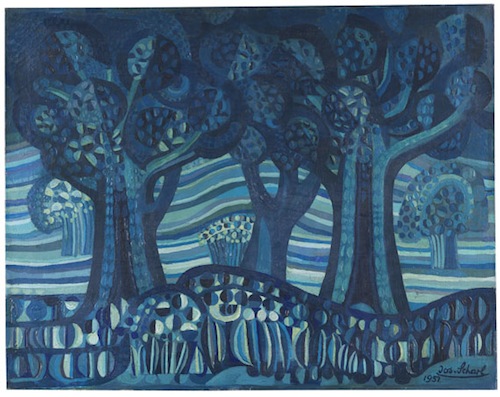The Tremendous 10 link roundup, #37
- How Designers and Non-Designers can get along | “To designers, it can seem no one else sees the value in your work. You’re an expert, but you aren’t respected like one. Too often, your recommendations get ignored. Chances to do your best work feel rare. To non-designers, design is mysterious and its value is uncertain. You aren’t convinced that it can really do anything for your goals, especially considering the price tag or all the extra work.”
- Albert Einstein’s Favorite Artist? | “In Print’s archives, you’ll find an array of articles by the usual—and brilliant—suspects: Paul Rand, Saul Bass, Charles Eames, and so on. But Print once featured an unexpected contributor from another field entirely: Albert Einstein. In 1955—the year he died—Einstein wrote a piece for Print reflecting on his friend, artist Josef Scharl.”
- Photoshop Design Space | “Adobe has just released the 2015 versions of its Creative Cloud software suite with improvements across the board. The feature additions getting the most attention are the changes to Photoshop CC 2015, which attempt to bring more screen design-specific thinking to the workhorse image editor.”
- 2015 LogoLounge Trend Report | “Each year, as I browse through thousands of logos in preparation for the annual Trend Report, I can’t help but consider the societal, technological and environmental influences and how they will affect the future of our industry. This year, three thoughts occurred to me…”
- The Secret to Disney’s Record Profits Can Be Summed Up In Just One Word | “Disney’s dominance can be boiled down very simply to one word: franchises. Or rather, an “incessant focus on franchises” in the words of former Disney CFO Jay Rasulo.”
- Macaw Scarlet | “Isn’t it time we had a proper web design tool? Image editors served us well during the early days, but they’re a hack for real web design. WYSIWYG editors are clunky, out of date and produce notoriously unusable code. We need a new breed of tool that embraces everything the web is today. We believe it’s time for a Live Design Environment (LDE) and we’re dedicated to building it. We call it Scarlet and, whether you’re a web designer or a front-end developer, we think it will change the way you work.”
- I have no trouble getting new clients, but I just can’t seem to keep them. What gives? | “Every time you say ‘I’ll get it to you close of business Wednesday’ but deliver instead at the start of business Thursday, that’s a mistake. When you use the wrong version of the corporate logo on the website, that’s a small mistake. When you cancel a meeting for the second time, again, that’s a mistake. On their own, none of these mistakes is a big deal. But taken cumulatively, you’ve become a pain in your client’s behind.”
- Modern Design Tools: Using Real Data | “I believe one of the biggest flaws of today’s tools is their failure to allow designers to easily work with real data. Because of this, designers often fill their mocks with idealized information that is anything but representative. Beautifully composed photos. Perfectly sized bits of text. Just the right amount of content to fit. We spend an inordinate amount of time making our pixel-perfect fabrications.”
- Moleskine Alternatives | “When I say Moleskine as a general term I am talking about one specific model: the hardbound Classic Journal in 8.25″ x 5″. This is the ubiquitous Moleskine. The one that is fawned over by the press, and the one that doesn’t fit my needs. That’s the key here. My needs. If it fits your needs that’s fantastic. You should definitely keep using them. But for me, Moleskine paper falls short of its competition.”
- 16 product things I learned at Imgur | “1. Every interface can be made simpler. One useful technique is to have a separate meeting focused just on cutting and simplifying. You can also appoint an individual ‘cutter’ to take this role outside of the meeting, but only after brainstorming.”
Image via Print Magazine, courtesy Ketterer Kunst.
